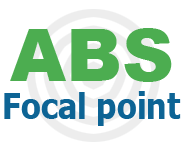
News
Scope of the EU ABS Regulation: commercial plant varieties and derivatives
Recently, the European Commission published a revised Guidance on the EU ABS Regulation (Regulation (EU) 511/2014). The revised Guidance provides more information on the scope and user obligations of the Regulation. In this article we highlight two topics regarding the scope: commercial plant varieties and derivatives.
Commercial plant varieties
When a commercial plant variety has been legally placed on the EU market, further use of this variety in plant breeding does not fall within the scope of the EU ABS Regulation, as the subsequent breeder relies on a new and different genetic resource, different from the initial genetic resource. This also applies to new varieties that are protected by a plant variety right according to the UPOV Convention, including under Regulation (EC) 2100/94 on Community Plant Variety Rights.
Consequently, the obligations of the EU ABS Regulation do not apply, and no due diligence declaration is required with regard to breeding activities involving the use of varieties that have been legally commercialised in the EU and/or protected by a plant variety right according to the UPOV Convention inside or outside of the EU.
However, provider countries may have national access legislation for their genetic resources, which may differ from the EU interpretation. This means that even if commercial plant varieties are outside the scope of the EU ABS Regulation, they may be in scope of national access legislation of the provider country. Check the national legislation, or you may run into problems with the authorities of the country concerned.
For more information, see section 8.4 of the Guidance’s Annex II.
Derivatives
A ‘derivative’ is defined by the Nagoya Protocol as: “a naturally occurring biochemical compound resulting from the genetic expression or metabolism of biological or genetic resources, even if it does not contain functional units of heredity”.
Access to derivatives is in scope of the EU ABS Regulation when there is an ascertainable level of continuity between a derivative and the genetic resource from which it was obtained. This is the case when access to a derivative is combined with access to a genetic resource from which that derivative was or is obtained or when research and development on such derivatives is addressed in mutually agreed terms (MAT) transferred to the user. Continuity is considered to exist in the following situations:
- The research and development activities conducted using a derivative form part of a research project covering the genetic resource and include obtaining the derivative.
- A user has obtained the derivative or commissioned a third party to obtain the derivative from a genetic resource in a research collaboration or as a specific service (e.g. under a service agreement).
- The derivative is acquired from a third party and it is transferred with PIC and MAT conditions that cover the respective research and development activities using the derivative.
Such continuity is not considered to exist (and research and development is out of scope of the Regulation) when:
- The derivative is acquired from a third party as a product or traded and obtained as a commodity and it is transferred without PIC and MAT conditions that cover research and development activities on the derivative, or without any access to a specific genetic resource.
For more information on derivatives, see section 2.3.4 of the Guidance.
More information about the scope of the EU ABS Regulation is available in the article EU ABS Regulation: in or out of scope? and our tool to help you determine if your activities with genetic resources are in scope of the EU ABS Regulation: Help tool.
